The Big Five - 19 October edition
My regular update on conflict and confrontation in Ukraine, the Middle East and the Pacific, accompanied by recommended readings on the character of modern war and planning for future conflict.
Russia – and its accomplices – want more wars. And this is a fact. They are learning. The more time they have to learn how to spread ruins, and only ruins, the more the world will inevitably pay later, unfortunately, for the right life, for the right to peace. President Zelenskyy, speech to Verkhovna Rada, 16 October
It has, again, been an interesting week in international affairs and what is now clearly an open confrontation between authoritarians and western democracies. In some places this features all out war, such as in Ukraine and the Middle East, in others it is sabotage and subversion such as Russia’s operations throughout Europe, and elsewhere it is high-level military aggression such as that from China and North Korea in the western Pacific.
It is a big update on Ukraine this week, so my update is focussed on that. I will return to a more balanced Ukraine, Middle East and Pacific update next week.
Ukraine and Russia
There was quite a lot going on with the political and strategic aspects of the war in Ukraine and Russia this week. Speaking at the European Council summit in Brussels this week, Zelenskyy stated the following:
Either Ukraine will have nuclear weapons and that will be our protection or we should have some sort of alliance. Apart from NATO, today we do not know any effective alliances…NATO countries are not at war. People are all alive in NATO countries. And thank God. That is why we choose NATO. Not nuclear weapons.
Zelenskyy walked back his comments on nuclear weapons later in the week. During a press conference with the head of NATO, Zelenskyy stated that “we never spoke about...that we are preparing to create nuclear weapons or something like this." While he may have walked back his public comments, this indicates that talk about nuclear weapons has occured within the Ukrainian government.
Ukraine is far from the first democratic nation to opening discuss the potential for acquiring nuclear weapons. In January 2023, the South Korean president stated that his nation would consider building nuclear weapons, or request that the United States deploy nuclear weapons to South Korea, if the threat from North Korean nuclear weapons continues to build. This, and the Ukrainian president’s comments, is indicative of the unease in some democracies about the threat posed by the China-Russia-Iran-North Korea authoritian collective, and the growing sense of distrust in the U.S. extended nuclear deterrent (which is explored in this succinct report from the Congressional Research Service).
Zelenskyy was again out and about selling his Victory Plan this week as well. He presented the plan to the Ukrainian parliament as well as to the European Council in this speech during the week. The Kyiv Independent has had running coverage of the Victory Plan over the past few weeks. Now that the plan has been presented to the Ukrainian parliament, its contents have become a little clearer. The plan has five key elements, as well as three classified annexes. The five elements are as follows: an immediate invitation to join the NATO alliance; enhanced defence capabilities for Ukraine including long-range strike; measures to deter Russian aggression; economic growth and cooperation; and, a security architechure for Ukraine’s post-war security and prosperity.
This week, NATO also held its Defence Ministers meeting which also included the members of the Indo-Pacific Four (IP4) nations of Australia, Korea, Japan and New Zealand. Topics covered included defence production, research and development, improving cyber defences and countering disinformation as well as the collaborative effort to support Ukraine. Additionally, five initiatives were launched:
Accelerate the delivery of new generation Remotely Piloted Aircraft Systems.
Deliver a distributed synthetic training environment to meet the growing demand for multi-national virtual training.
Step up efforts to support allied delivery of space technologies.
Increase the interchangeability and interoperability of key artillery munitions.
Advance work on two projects already underway: the Next Generation Rotorcraft Capability (NGRC) and NATO’s cross-border airspace cooperation.
This week it became apparent that North Korea is now a belligerent in this war. Video proof has emerged of North Korean troops at Russian bases. North Korea has allegedly deployed at least 10,000 troops to Russia for service there and in Ukraine. This represents about four brigades worth of troops, although there are reports of North Korean special operations troops also being deployed for service in Ukraine. Not known for their contribution to international peace and stability efforts, it is likely we will see these troops on the frontline against Ukraine soon. Head of Ukrainian intelligence, Kyrylo Budanov, this week stated that these troops will be ready to fight in Ukraine by 1 November.
The key issue is how this changes U.S. and NATO policy for the war. Now that Russia has brought in an additional belligerent to the war, doesn’t this mean that NATO should reconsider its strategy (it should) and now consider at least providing air and missile defence over Ukraine like Western nations do for Israel. This is a significant escalation of the war by Russia. If Putin can bring in North Korea troops, and NATO stands by, it confirms that the U.S. and its allies are more concerned about Russia losing than Ukraine losing. That would be a considerable strategic and moral failure by the West.
Hopefully Ukrainian forces can destroy enough of these forces quickly enough that the North Korean leader might see this as a bad experiment. However, there are hundreds of thousands of more where they come from, and Russia’s in-kind payments for these troops (technology, intelligence,?) might be seen by the North Korean leader as well worth the loss of thousands of North Korean soldiers. Afterall, the North Korean military has over one million personnel. Losing a few thousand soldiers will probably be seen by Kim Jong Un as a rounding error.
Russia has continued its campaign of subversion and sabotage throughout Europe. A week ago, the head of Britain’s MI5, Ken McCallum, described in his annual update how Russian operatives had conducted arson, sabotage and more dangerous actions conducted with increasing recklessness inside Britain after it had backed Ukraine in its defence against the Russian invasion. This week, Russia stands accused of attempting to bring down a German civilian aircraft after an incendiary device was detonated on board. This systemic and active campaign will continue until Europe pushes back against Russia - which does not seem to be on the horizon just yet.
It was a week of aid packages for Ukraine. First, the U.S. announced a significant package of military assistance for Ukraine. Announced on 16 October, this 425 million USD package included air defence missiles, munitions for HIMARS, artillery and air to ground munitions, anti-tank weapons and a large numner of HMMWVs. Germany also announed a large package of support. For a full list of German aid so far, see this link. Also this week in Germany, the opposition leader, Friedrich Merz, announced he is open to supplying long-range munitions to Ukraine. Finally, the Australian government committed to supplying 49 M1 main battle tanks to Ukraine, after sitting on the decision for nearly a year.
On the battlefield, Russian forces continued their push to reduce the size of the Ukrainian salient inside Kursk. Russian forces have pushed into the western regions of the Ukrainian salient in recent days, and much of this western area remains contested. Fighting has also continued to the west of the Ukrainian salient in Glushkovsky Raion, although there has been no significant change in territory held by either side there.
The Ukrainian Kursk campaign was a key element in President Zelenskyy’s speech about his Victory Plan, particularly in ‘element two’ which is focussed on defence. Zelenskyy described in his speech to the Ukrainian parliament this week how:
Ukraine does not and will not believe that the majority of Russians will truly realize the depth of their state's moral decline. But they must feel the decline of the Russian army…And thanks to the Kursk operation, we have seen that Putin does not have enough forces to hold on when we push, and we push really hard.
Whether the the battlefield successes of Ukraine in Kursk can be translated into political and strategic outcomes remains to be seen. As I noted in my recent special assessment of the Ukrainian Kursk campaign, the political and strategic benefits of this campaign are yet to manifest.
In eastern Ukraine, Ukrainian and Russian forces have reported worsening ground conditions along the length of the frontline with the arrival of the initial stage of muddy conditions. The Russians in several areas have intensified their mechanised operations in order to advance wherever possible before conditions preclude the large-scale use of heavy armoured vehicles. Yes, tracks do assist in cross-country mobility under most conditions. But, Ukraine’s muddy seaon is renowned for its ability to ‘capture’ armoured vehicles. Like the jungle, mud is neutral!
Russia has continued its push in eastern Ukraine, and has made some gains over the past week. There is also some evidence that Russia has evolved its tactics in the east again, using even smaller assualt groups of disaggregated soldiers. As the Centre for Defence Strategies noted on 18 October:
The enemy's tactics on the Pokrovsk direction have changed: small assault groups now operate in pairs, with one group attempting to establish a tactical foothold on the forward position, while the other group follows behind to provide support.
Russia’s main effort remains achieving the political goal of securing the Donetsk and Luhansk oblasts in Ukraine. Notwithstanding their recent gains, the Russians appear unlikely at this point of their 2024 offensive campaign to achieve this - at least in 2024. The ‘imminent fall’ of Pokrovsk has failed to materialise as has the ‘imminent fall’ of Chasiv Yar. The Russians are slowly advancing, but are doing at enormous costs in people and equipment.

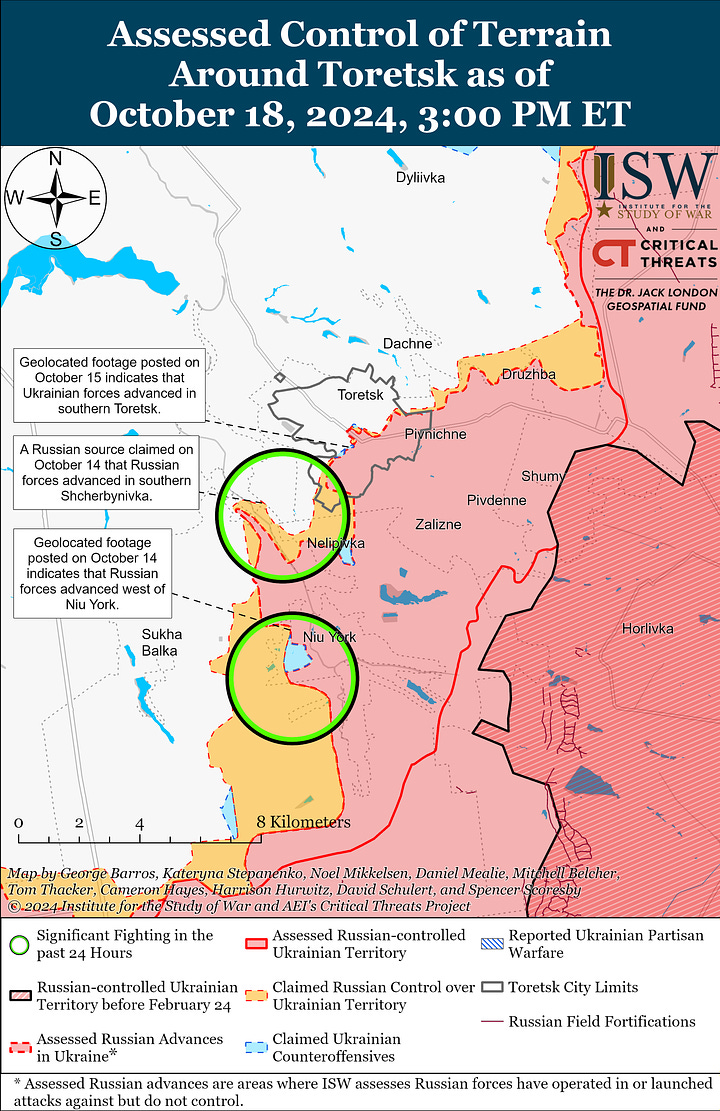
******
This week, for the first time in a while, I was at home. That didn’t mean I was slack! I gave a presentation to the Ukrainian National Academy of Security Service as well as a presentation on adaptation to the NATO International Week being held at the National Defense University of Ukraine. My interview with the team at the terrific podcast, Ukraine: The Latest was also released and I did a book event for The War for Ukraine at the Center for Strategic and International Studies (which you can watch here).
I also published one article, which examined the political, strategic and tactical objectives of the Chinese Exercise Joint Sword 2024B, which got underway around Taiwan this week. You can read that article here.
Additionally, there have been a couple of useful info-graphics publised by Damien Symon (@Detresfa_) and Ian Ellis Jones (@ianellisjones). I have included them below as a small compensation for not including the western Pacific in my update this week.
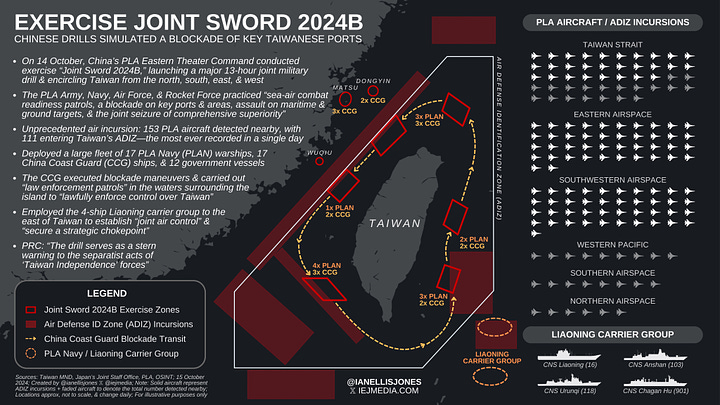
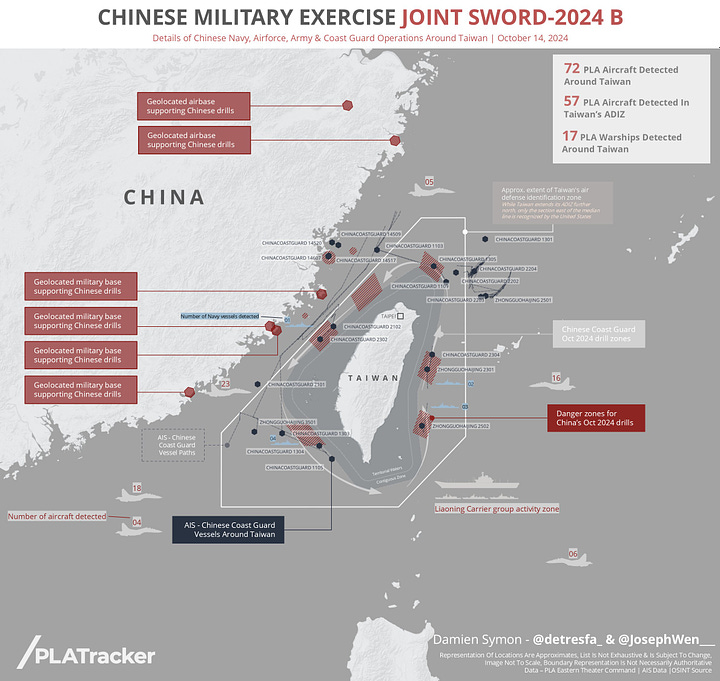
And so to this week’s Big Five readings…
This week’s recommendations cover topics such as global cyber threat trends, a civil-military challenge in Israel and lessons from Russian adaptation in Ukraine in 2023. There is a good report that explores the current status of the AUKUS program, and a piece from RUSI that explores what the author describes as ‘the impending betrayal of Ukraine’.
As always, if you only have time to read a single article, the first one is my pick of the week.
Happy reading!
1. A Review of the AUKUS Program
In the past week, the U.S. Congressional Research Service released an examination of the AUKUS project. It is a comprehensive report which got some in the media and analytical community in Australia a bit excited. The section that got people commenting was as follows: “An alternative to Pillar 1 as currently structured would be a U.S.-Australia military division of labor under which U.S. SSNs would perform both U.S. and Australian SSN missions while Australia invested in military capabilities for performing non-SSN missions for both Australia and the United States.” This was interpreted by some as the U.S. or Australia possibly walking away from Pillar 1 (that was not the intent of the report). The report also highlighted that the argument could be made for Australia investing in alternative deterrence capabilities under an “alternative division of labour”. Given there has been no serious examination of the opportunity costs of the $360 billion cost of the Australian nuclear-power submarine program by the Australian government, this is a reasonable statement. You can read the report, and make your own judgements, here.
2. Escalating Cyber Threats
Microsoft in the past five years has been publishing an annual update on digital trends and cyber threats. This is a very comprehensive report. It is not just a report for cyber profressionals but for all of us interested in international security affairs. Some of the key trends include:
Nation-state activity was heavily concentrated around sites of active military conflict or regional tension.
State-affiliated actors increasingly are using cybercriminals and their tools.
Russia, Iran, and China have all used ongoing geopolitical matters to drive discord on sensitive domestic issues leading up to the U.S. election.
Threat actors are experimenting with generative AI.
Financially motivated cybercrime and fraud remain a persistent threat.
This is a report well worth reading. You can access the report here.
3. Israel’s Civl-Military Challenge
An interesting piece published in Foreign Affairs recently explores what the author contends is a hidden struggle between politicians and generals in Israel over national security policy. In one section, the author notes that “Israel’s top security officials, who are tasked with preventing and countering violence against Israelis, are raising the alarm, asserting that sections of Israel’s political right are working directly against the country’s own interests.” It is an interesting piece, and the author makes some good points. That said, this kind of civil-military interplay is normal in democracies. Eliot Cohen calls it ‘the unequal dialog’. You can read the full article here.
4. Russian Adaptation in Ukraine
This week, Mike Kofman released a detailed study of Russian military adaptation in Ukraine, with a particular focus on 2023. Anyone who has followed my writings over the past few years (or indeed since my first piece on this topic 17 years ago) knows my belief that adaptation is one of the critical capabilities - if not THE critical capability - of any successful military institution. It is vital we nurture this in our own insitutions, and study the adaptive processes of our enemies. In this report, Kofman explores the organisational, doctrinal and technical developments in the Russian forces throughout 2023, which provided the foundation for their 2024 offensive in eastern Ukraine. Your can read the full report at this link.
5. The Trajectory of the War in Ukraine
This is an interesting piece from RUSI. In it, the author argues that there has been a failure of collective determination to defeat Russia in its war of aggression against Ukraine. As he writes, “this should have been Europe’s war to manage. In spite of decades of discussion about European defence, it proved too convenient to rely on US largesse. This made Europe a prisoner of US electoral factors.” It is a short but very thoughtful piece, which can be read here.




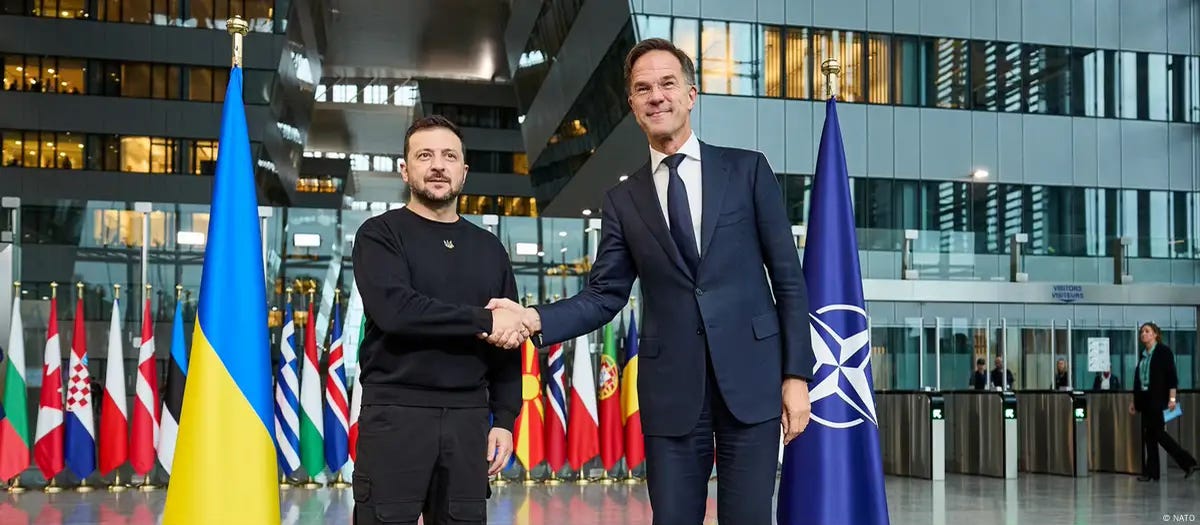
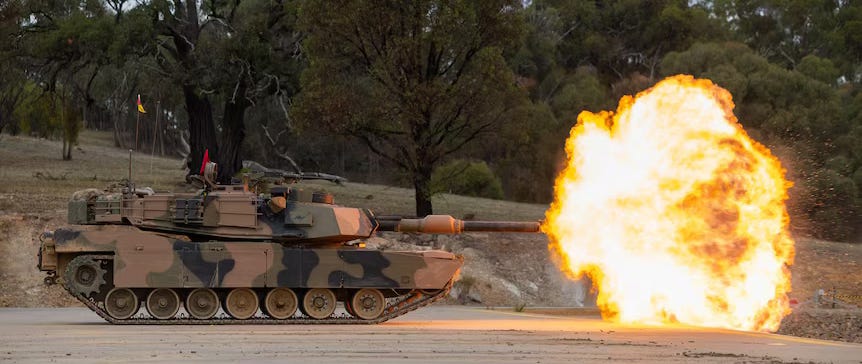
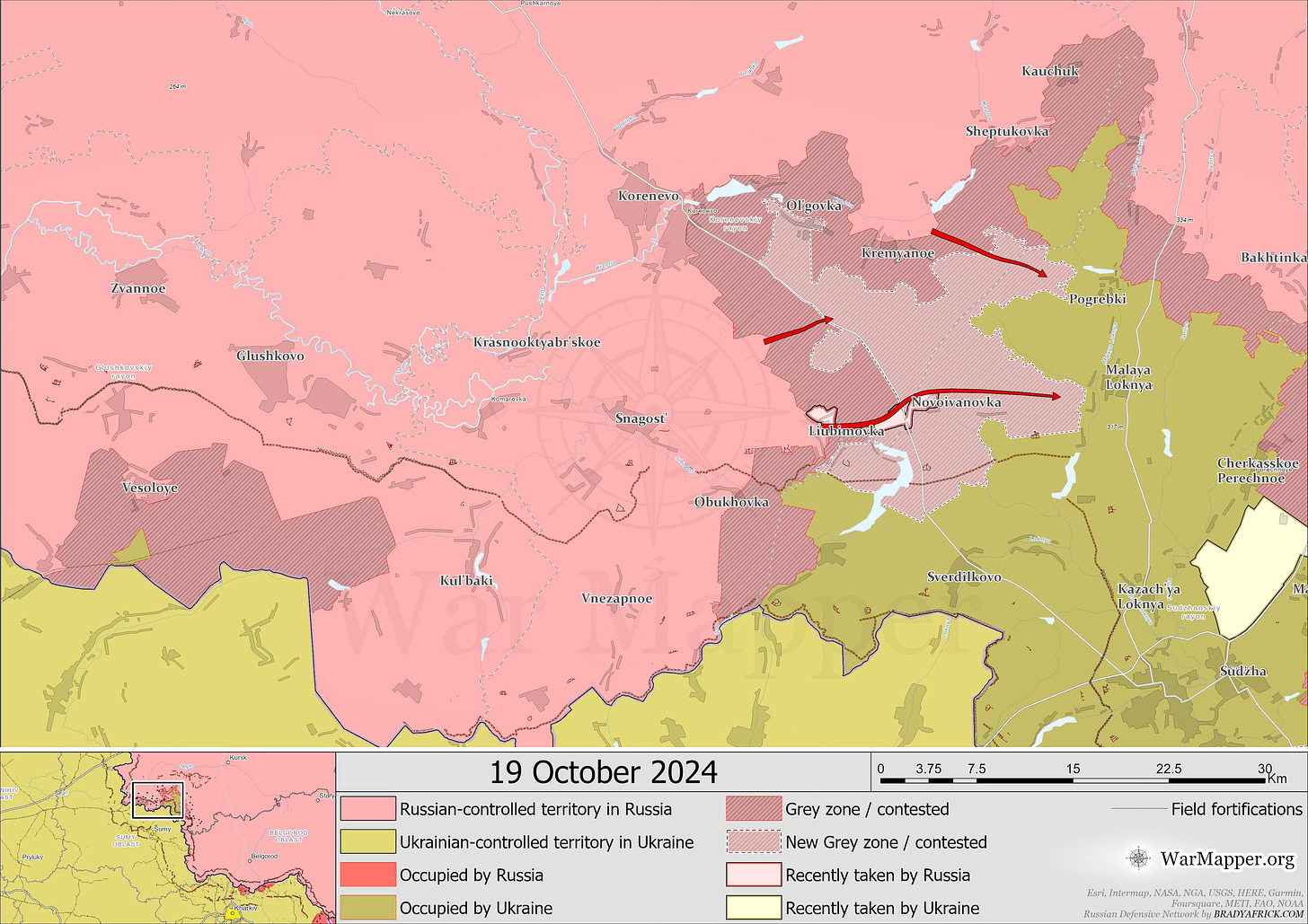
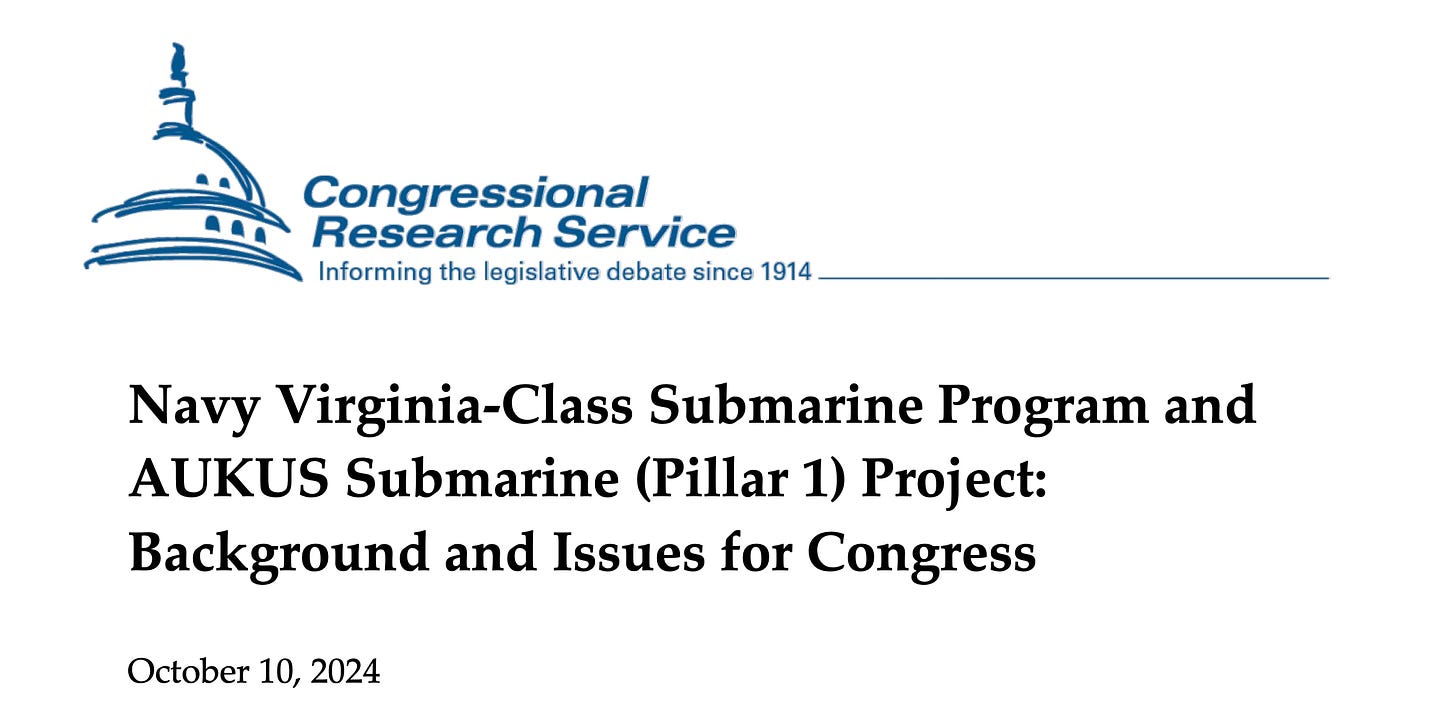
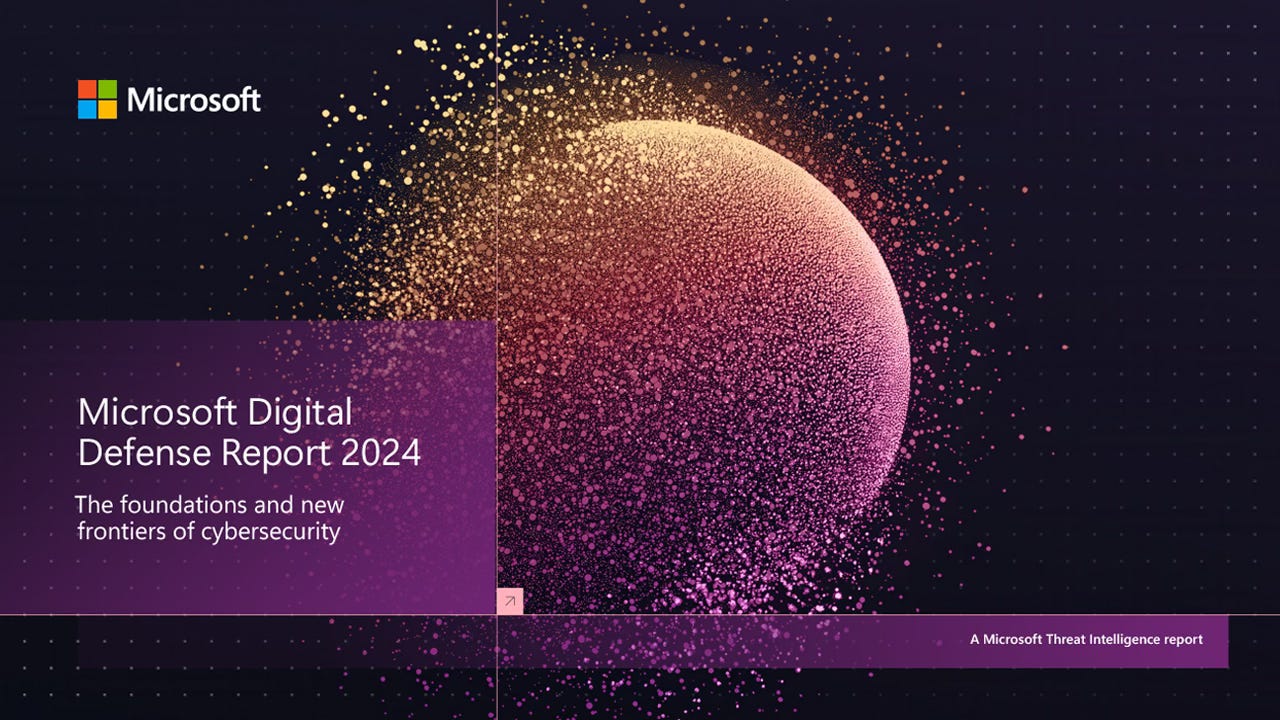
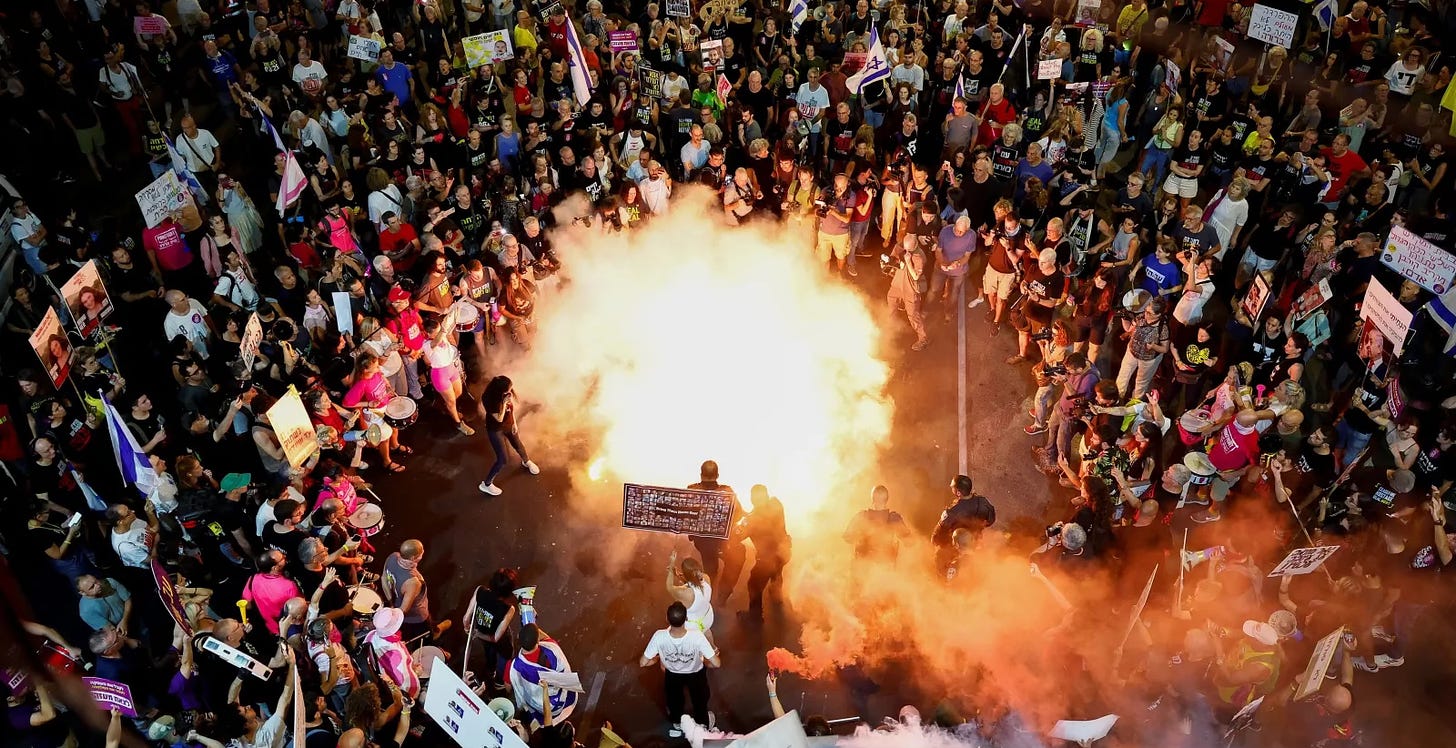
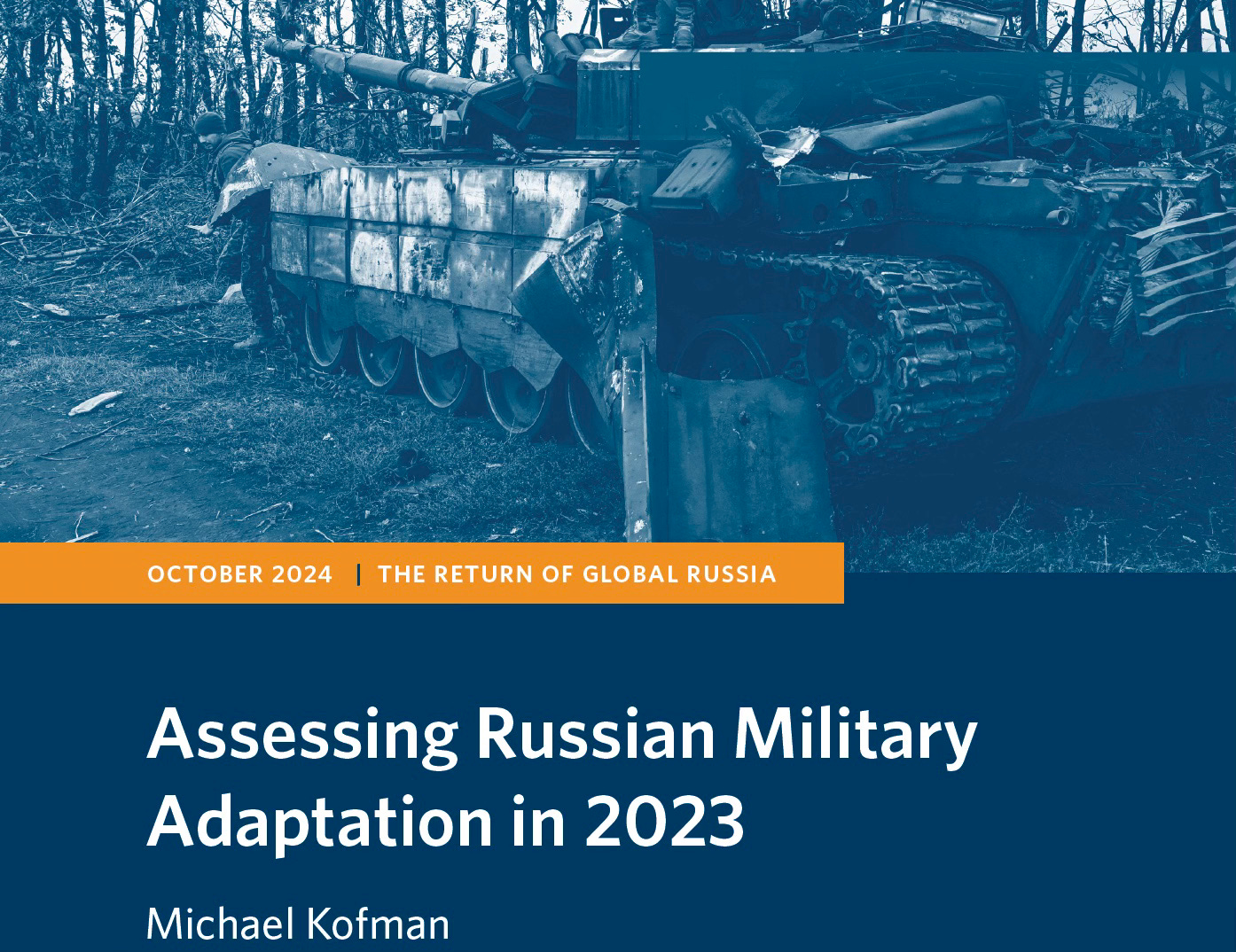
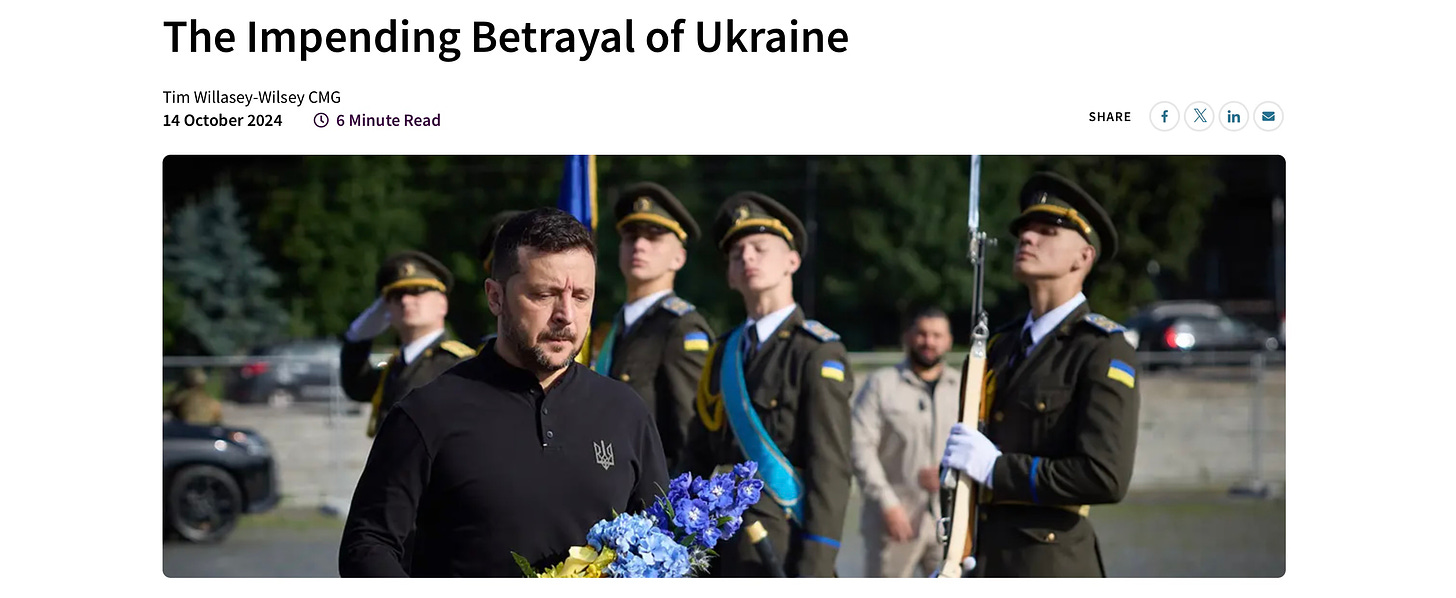
Thank you Mick. The Zonszein story on Israel seems sadly familiar to those of us here in the US.
Good information and recommendations as always. Three things I'd love to see, as a minimum in response to developments in Ukraine and Taiwan. We must take all restriction off of the weapons systems provided to Ukraine. Send a message to the PRC by having NATO and allied joint exercises starting to focus on convoy protection, and other measures needed to ensure Sea lanes remain open. Freeze all public and private assets belonging to North Koreans in western final institutions. I don't think further sanctions are worth the effort but this might hurt.
Separately, have you been watching the developments in the Horn of Africa. It looks like the chance of an active conflict is rising there. I am working on a piece for University on the tension between Ethiopia and Egypt over the Grand Ethiopian Renaissance Dam (GERD) and was struck by how the situation as deteriorated this year since Ethiopia made the deal for a port with Somaliland and Egypt allied herself with Somalia.